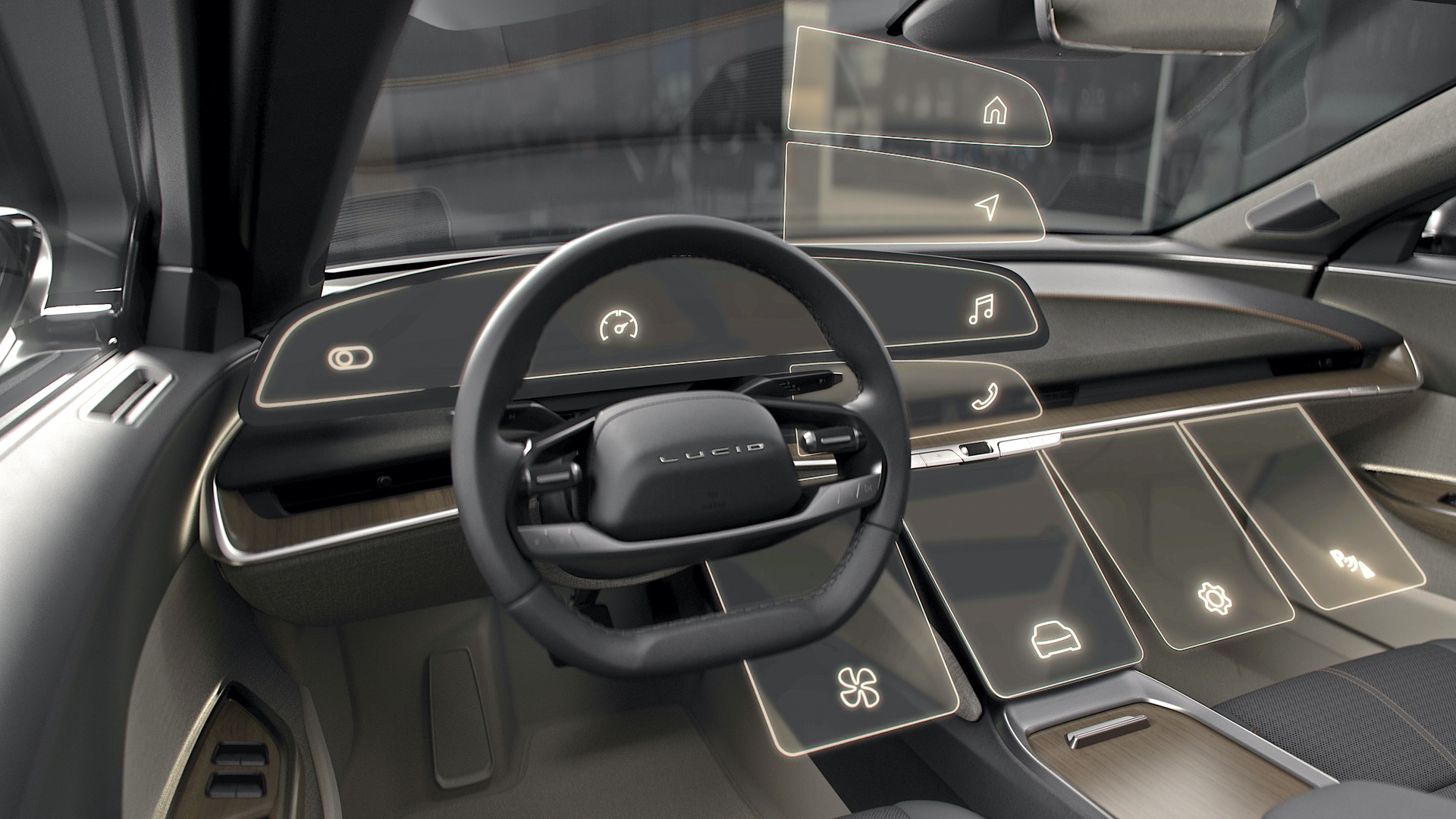

Rawlinson was careful not to use any "car of the future" language introducing the Air.

Reflections of the future: the wraparound glass roof from the back seat of the Lucid Air. The pilot panel, sized like a regular iPad, can be stowed if necessary, but I never found it the slightest bit distracting either. There's also what Lucid calls the "pilot panel," another screen angled up to look at you from the area where automakers normally put the temperature controls and the cupholders (which, in the Lucid Air, are hidden in the center console). The 34-inch dashboard display that curves subtly around the steering wheel was not it's more width than height. The extra sky view was almost a distraction for this driver.
Lucid car interior drivers#
(As EV drivers know, running the AC zaps charge.) You won't need to crank the AC to max unless you're in hundred-degree temperatures (it was 90 degrees in Casa Grande, and we had our Air's AC at less than half capacity). A roof that is (bar one bar) made of infrared light-blocking glass keeps everything cool within, while specially-designed gills draw heat out from inside the car. Rather, you feel like you're in the observation deck of a high-speed train. The Air banishes car sickness alongside range anxiety, because you never feel like you're crammed inside a box. Sitting in the roomy back seat (which we also did) seems like something you could happily do for hundreds of miles at a time - and even when all occupants are over 6 feet tall, everyone has plenty of legroom. Because of the GT-like handling and torque, yes, but also because so much thought has gone into the interior experience. Smiles spread across once-skeptical faces.
Lucid car interior full#
The line's precision and care, with multiple redundant quality control tests from battery pack assembly to "squeak and rattle" track, seemed like a middle finger to Musk - whose Tesla production process is famously haphazard, corner-cutting, and full of grueling shifts that spill out of the factory and into temporary tents.Īnd then, finally, after years of waiting, a small group of media folks got to actually drive the Dream Edition. During a bladder-testing three-hour tour, we were shown a production line where every aspect of making EVs - heck, of making cars, period - has been meticulously re-thought. That changed Tuesday at Lucid's sprawling million-square-feet factory in Casa Grande, Arizona, an hour south of Phoenix, where there was nothing but flat desert two years ago. What we didn't know was how it drove, or exactly what was under the hood of this suspiciously secretive car of the future. We knew it gets a world's-best 520 miles per charge, according to the EPA. We've known what the Lucid Air looks like since Rawlinson showed us in 2020 and compared it to a TARDIS (it does indeed feel bigger on the inside). Some 13,000 pre-order customers will be taking delivery of the Lucid Air, or rather its extremely expensive $169,000 Dream edition, starting in October. Now Rawlinson has unveiled the first fruit of his new company, Lucid Motors. Tesla only bucked the trend, according to the latest reporting, with a lot of charismatic bluster from Elon Musk and a lot of skill from his estranged engineering guru, Peter Rawlinson, the father of the Tesla Model S. Grand failures like DeLorean stood as warnings to anyone who would innovate outside the conservative carmaker club. Experience has taught us to be wary of any "car of the future." Decades' worth of cool concept vehicles with that title never made it near a production line.


 0 kommentar(er)
0 kommentar(er)
